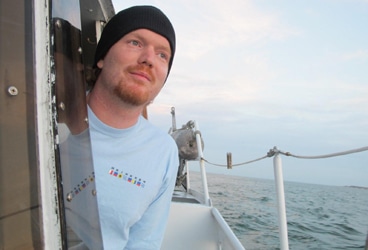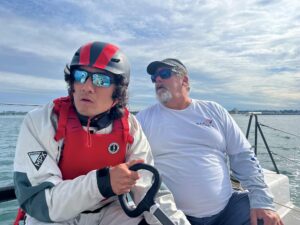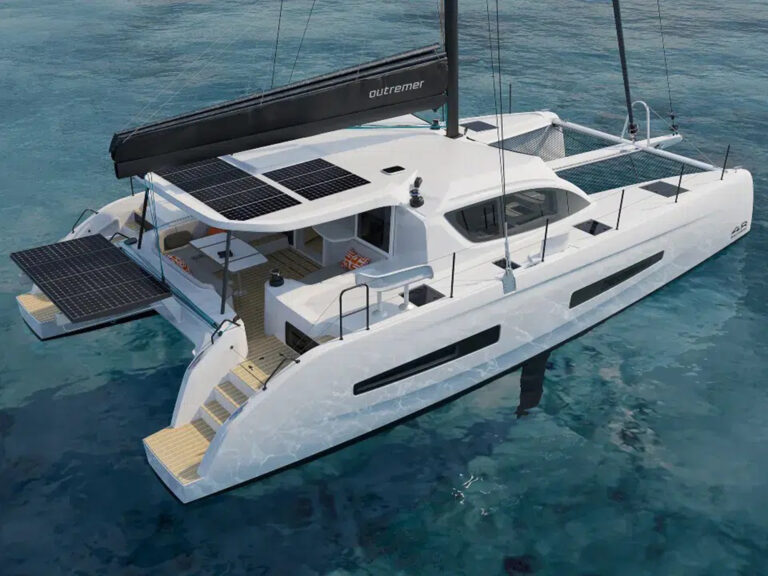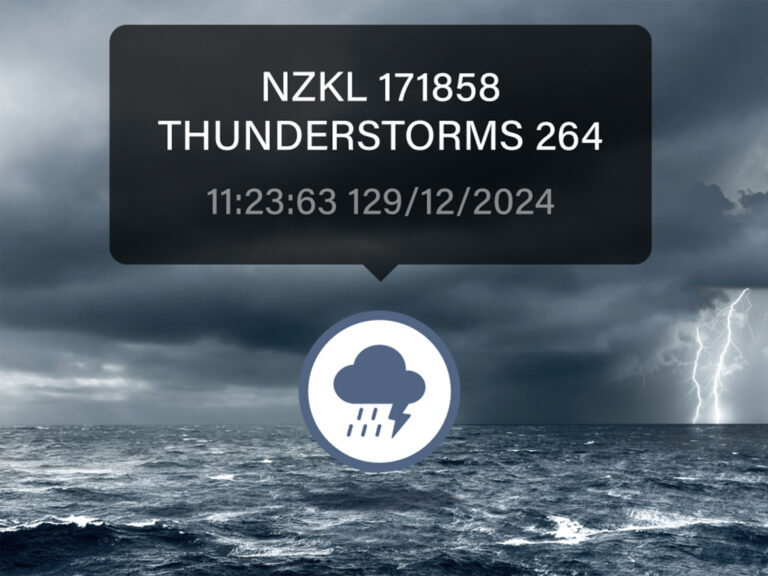
It’s pretty funny to think we had to sail 2,200 miles just to get to the place where we can start doing or primary research. Talk about a long commute to work! Then again the eastern side of the North Atlantic Gyre is nowhere near the Chesapeake Bay. At this point we are only two days sail from the Azores. I’d be lying if I told you I wasn’t tempted to stop. Two days hiking around a beautiful island in the Azores, fresh bread and cheese, cold beer and wine. It would take two days to get there and two days to get back so if we spent two days in the Azores we would lose six days of research. This expedition has nothing to do with cheese, wine or land so we will stay out to sea and collect the data we came here for. The Azores aren’t going anywhere, we’ll see some other time.
Things have been caring on as well as one can hope. Tropical storm Andrea was far enough to the north so we only got 25-30 knot winds. We left the Chesapeake bay with 160 gallons of diesel and have only used 20 gallons the first 2,200 miles. We did have a problem with our fuel bladder springing a leak. We didn’t lose any fuel but transferring it was a fiasco. The pump I had for the fuel bladder broke. I tried to syphon the fuel out of the bladder into the main tank but all I did was get a mouth full of diesel. Eventually I managed to transfer the fuel but not without getting covered in diesel. That said, last time that happened to me I was alone, in the fog, in a gale, surrounded by icebergs. At least this time I had a leaky fuel bladder when it was warm, calm, and I had help.
A Gyre is an area of circulating currents, there are 5 gyres in our earth’s oceans. The Gyre in the North Atlantic is about half the size of the continental United States. Now that we are at the North Eastern edge of the North Atlantic Gyre we can start pulling our Manta Net. A Manta Net is a specially designed net that can determine the amount of micro plastics in the water. Over the years a huge amount of plastic has made its way (due to poor management) into our earth’s oceans. It’s very hard to determine how much of this plastic has drifted with the currents to the open ocean because the open ocean is far from land and a hard place to hang out and due research. This type of research has been done along the more conventional ocean routes and near coastal areas but it has never been done in the epicenter the Gyre itself. We will be doing our research over the next 2,500 miles. We will be covering an area which is same size as Washington DC to Kansas (east to west) and Detroit to Jacksonville (north to south). So we are doing a plastics survey over a huge section of the mid Atlantic.
Ocean Research Project is an official 501 (c) 3 non-profit. I designed the non-profit with the idea of keeping overhead to a minimum so the maximum amount of donated money goes to the mission. Your donations will not be paying for an office space, electric bill or a secretary as none of that is necessary for Ocean Research Project. Since we own our sailing research vessel and maintain it our self our daily running costs are less than 10% of the typical running costs for this type of research. Although we keep costs down and overhead to a minimum we still struggle and are in need of donations so we can continue to collect scientific data that will help the scientific community better understand the problems facing out oceans. Thanks for following our first expedition!
Learn more about the voyage at the Ocean Research Project website.








